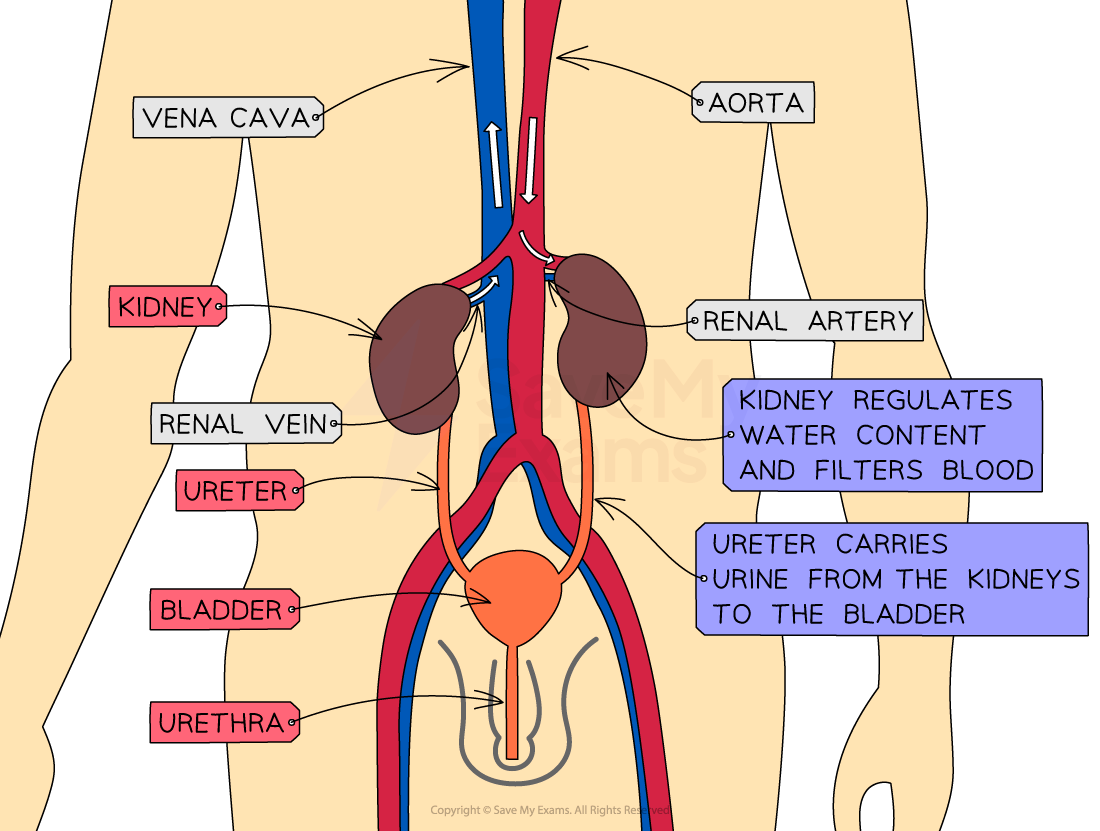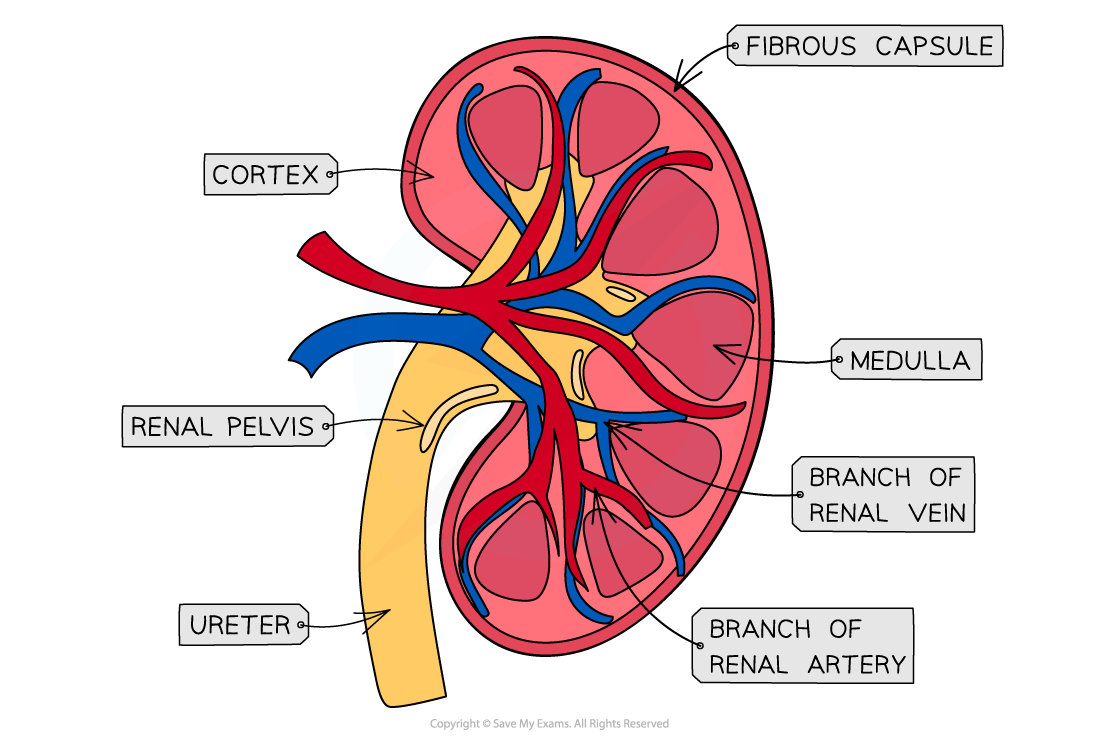Kidney Structure (Cambridge (CIE) A Level Biology): Revision Note
Exam code: 9700
Structure of the human kidney
Humans have two kidneys
The kidneys are responsible for carrying out two very important functions:
As an osmoregulatory organ—they regulate the water content of the blood (vital for maintaining blood pressure)
As an excretory organ—they excrete the toxic waste products of metabolism (such as urea) and substances in excess of requirements (such as salts)

Structure | Function |
|---|---|
Renal artery | Carries oxygenated blood (containing urea and salts) to the kidneys |
Renal vein | Carries deoxygenated blood (that has had urea and excess salts removed) away from the kidneys |
Kidney | Regulates water content of blood and filters blood |
Ureter | Carries urine from the kidneys to the bladder |
Bladder | Stores urine (temporarily) |
Urethra | Releases urine outside of the body |
The kidney itself is surrounded by a fairly tough outer layer known as the fibrous capsule
Beneath the fibrous capsule, the kidney has three main areas:
The cortex (contains the glomerulus, Bowman’s capsule, proximal convoluted tubule, and distal convoluted tubule of the nephrons)
The medulla (contains the loop of Henle and collecting duct of the nephrons)
The renal pelvis (where the ureter joins the kidney)

Examiner Tips and Tricks
Make sure you can identify all the structures mentioned on this page if you are presented with a diagram of the kidney and its associated structures, or a diagram with a vertical cross-section of the kidney itself.

Unlock more, it's free!
Did this page help you?